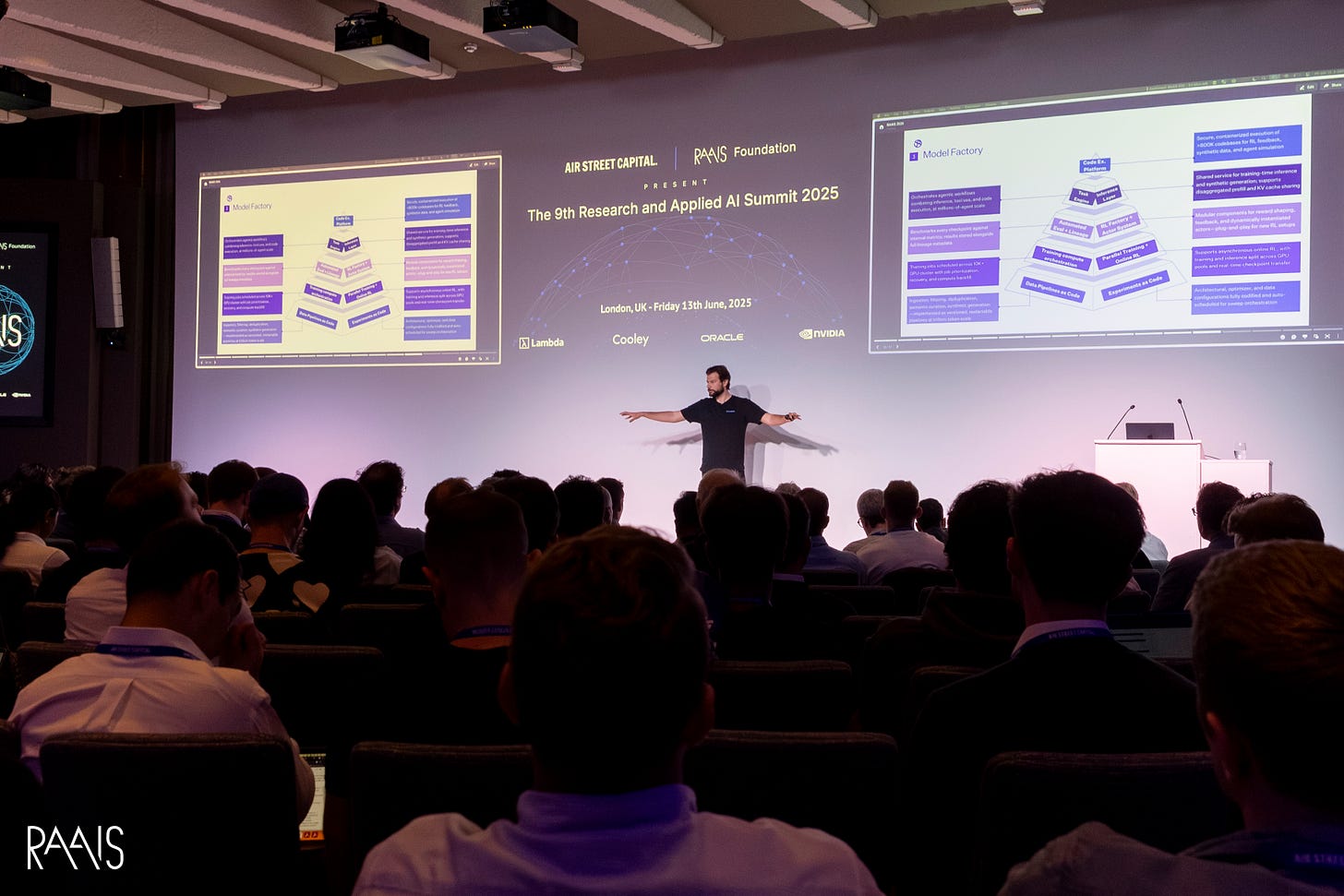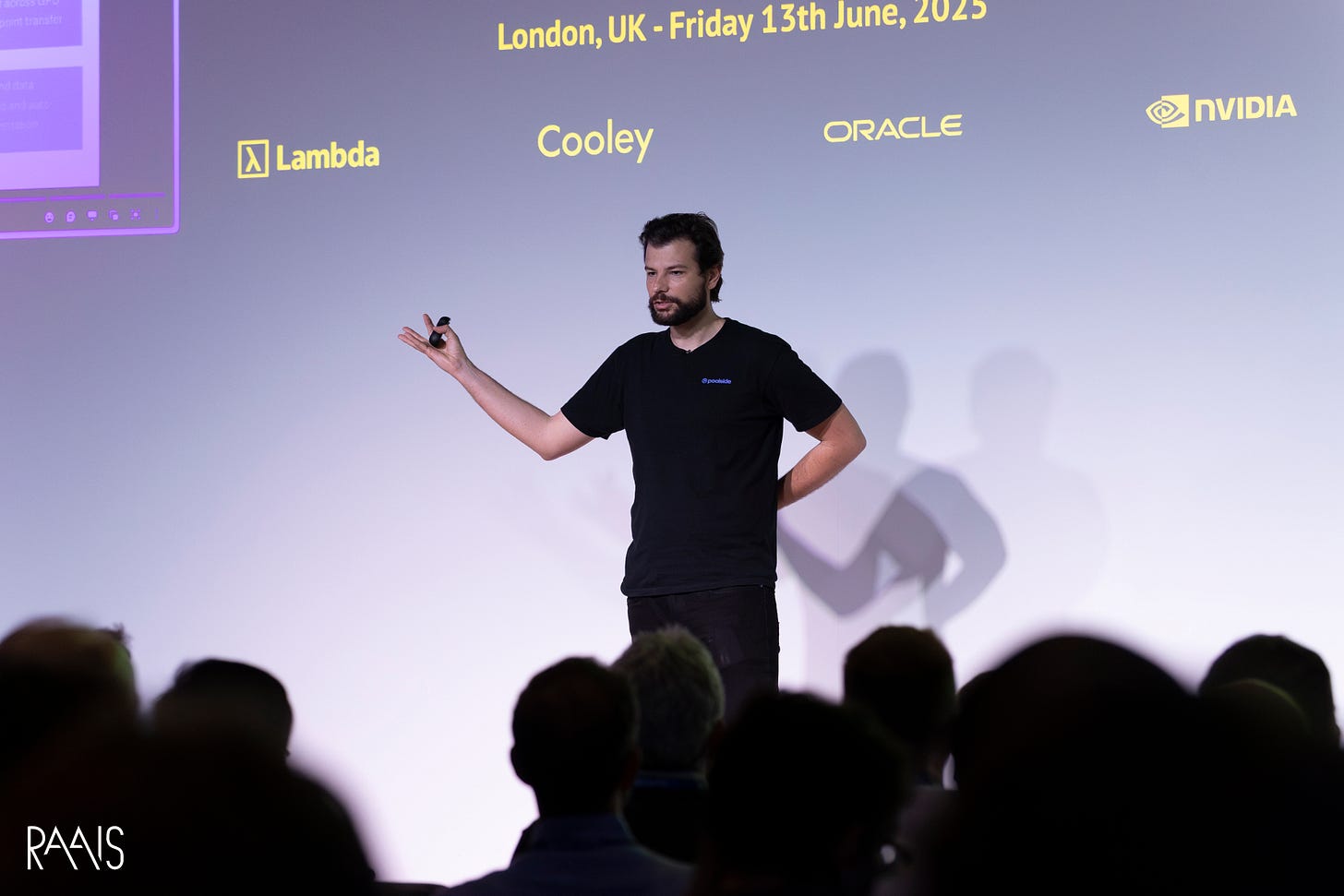When poolside co-founder and CTO Eiso Kant stepped on stage at RAAIS 2025, he didn’t deliver the kind of slick, pre-baked keynote you might expect from the co-founder of one of the most ambitious AI companies in the world. Instead, Kant opted for a more experimental approach: a candid walkthrough of poolside’s beliefs, software systems, and bets on how to build AGI. The result was one of the most revealing sessions of the summit.
Kant’s message was clear: if you want to compete at the frontier of model capabilities, the secret isn’t just scale, it’s iteration speed. And to iterate fast, you need infrastructure that matches the ambition of your research. This is the thesis behind poolside’s “model factory,” a production-grade system for turning ideas into results at industrial speed.
Reinforcement learning as the next frontier
Back in 2023, poolside made a contrarian bet. While the AI zeitgeist was still intoxicated by the notion that bigger models and more data would eventually yield AGI, poolside went the other way. “We didn’t believe you could just fine-tune your way to general intelligence,” Eiso told the audience. “Our view was that reinforcement learning, not parameter count, was the key scaling axis.”
That bet is paying off. Eiso predicts that within 36 months, frontier models will reach human-level capabilities across most knowledge work done behind a screen. What will power this transition? A shift from human-in-the-loop assistance to agents-as-contributors—software entities that learn, act, and improve themselves in semi-autonomous environments.
The rise of the model factory
Much of the talk focused on the internal engine driving poolside’s progress: the “Model Factory.” This isn’t a metaphor. It’s a fully versioned, directed acyclic graph (DAG) of modular components, from data ingestion and preprocessing to model training and evaluation. Every experiment, every change, is tracked immutably. Researchers don’t start from scratch, they fork, tweak, and run. And if one asset in the pipeline changes, the whole model lineage downstream can be rebuilt automatically.
The results are important. One researcher pushed a new RL optimization idea to production results in under a week. Another ran 500 architecture sweeps over a weekend with a simple for loop. “When your factory is built well,” Eiso said, “the big training run is the easy part.”
Synthetic everything
poolside also stands out for its approach to training data. “The dirty secret is that 99% of foundation model data comes from the web,” Eiso noted. But instead of throwing more human labelers at the problem, poolside embraced synthetic data. Today, 20% of their training corpus is model-generated and refined through RL, guided by a small layer of high-quality human feedback. In the coming years, Eiso predicts that it will be closer to 98%.
Even post-training is synthetic-only. “We don’t believe in spending billions on human-labeled data to polish models,” said Eiso. “We think the future is: reward models trained on human judgment, used to guide synthetic data pipelines.”
In fact, Eiso and I dove into this topic in a video podcast we record earlier this year amidst the noise that “deep learning is hitting a wall”…
From agents to self-play
poolside’s RL work centers on software development agents. Initially, these were traditional models fine-tuned on code tasks. But increasingly, the model is the agent, operating inside a reinforcement loop that uses real-world codebases and synthetic programming tasks as training environments. “The agent product is now the binary that calls the model,” said Eiso. “And we’re training that loop end-to-end.”
This approach is blurring the line between model, agent, and product. In the software domain, where the environment is rich, structured, and fully digital, poolside sees a clear path to autonomy. “First, they assist. Then, they contribute. Eventually, they collaborate.”
The AGI arc: generalization through focus
Despite their narrow beachhead in software engineering, poolside is building toward general intelligence. “You can’t separate reasoning capabilities from general intelligence,” said Eiso. “Even if we’re not training a poet or a therapist, the ability to plan, understand, and reason is universal.”
The final slide hinted at a broader philosophical view. poolside isn’t trying to mimic humans with eyes, ears, and limbs. It’s trying to build agents that can think deeply “to do long, complex reasoning in digital environments.” That, Eiso argued, is the real foundation of AGI.





